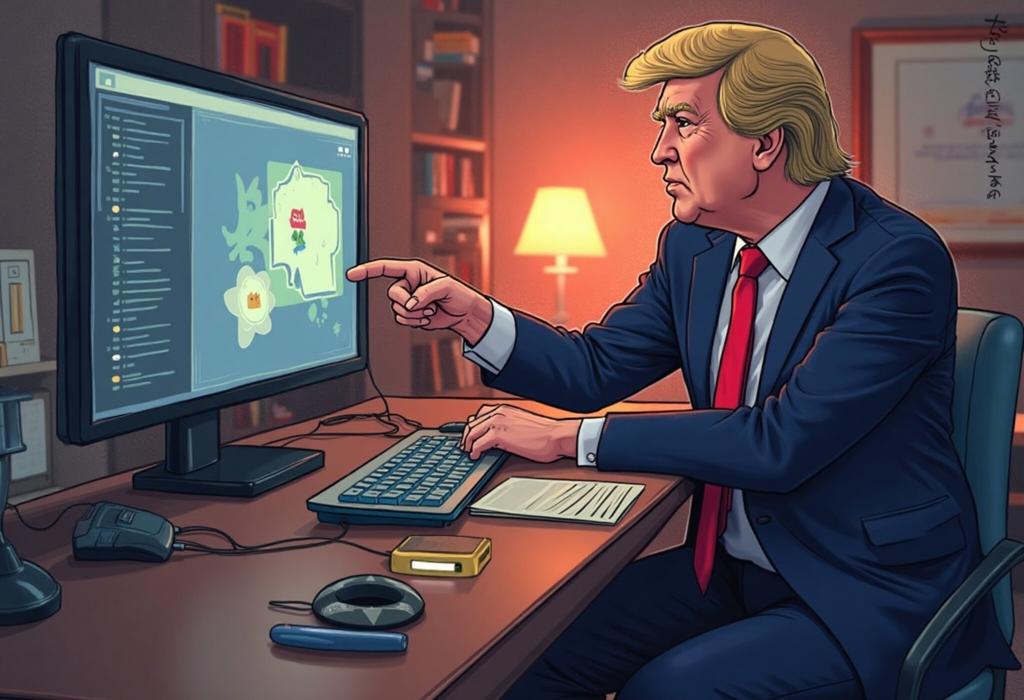In a significant shift in U.S. trade policy, President Donald Trump recently issued an executive order ending the de minimis exemption, which allows for duty-free import of packages valued under $800. Effective May 2, this change comes as part of a broader strategy to address what the administration perceives as exploitative shipping practices from China and Hong Kong. The de minimis exemption has long facilitated a seamless e-commerce experience for American consumers, especially with platforms like Shein, Temu, and Alibaba supplying low-cost goods.
Industry experts believe that this sudden policy change will lead to higher prices for consumers and longer shipping times. Clark Packard from the Cato Institute emphasized that while the intention behind the policy is to clamp down on illegal drug smuggling, the practical implications may not significantly alter the flow of narcotics or reinforce U.S. manufacturing as intended.
The removal of this exemption is not without precedent; in fact, it has been a topic of discussion among lawmakers across party lines due to concerns over the influx of cheap goods and potentially unsafe products. Notably, a letter from a coalition of House Democrats urged the Biden administration to take action against the exemption, citing threats to American jobs and safety, as well as overwhelming U.S. Customs and Border Patrol (CBP) with processing duties.
With over 92% of cargo entering the U.S. under this exemption, the policy reversal is expected to create substantial obstacles for buyers, who are already expressing concern about ramping up their purchases before the tariffs take effect. Some consumers, like Phillip Dampier from Rochester, New York, have begun stockpiling goods in anticipation of these price hikes.
In addition to increased costs for consumers, this decision could severely impact Chinese manufacturers and e-commerce platforms, several of which are now looking to adapt by shifting inventory to U.S. warehouses or seeking to reroute shipments through countries that still benefit from the exemption. The competitive landscape may change as these retailers adjust their supply chain strategies in response to new tariffs. For instance, it's been reported that some businesses might resort to what is termed 'the Tijuana two-step,' where shipments are redirected through Mexico to exploit remaining de minimis loopholes elsewhere.
Experts like Packard have raised concerns that this approach could lead to more convoluted supply chains and won’t necessarily address the core issues surrounding drug trafficking or bolster domestic manufacturing that U.S. policy aims to protect. Despite the volatile environment, many Chinese sellers may be forced to reconsider their U.S. operations altogether, as illustrated by stories of entrepreneurs in Hangzhou and Guangdong struggling with the impending tariff regulations. The evolving dynamics between U.S. buyers and Chinese merchants highlight the fragility of such trade relationships.
As the deadline looms, the e-commerce ecosystem is in a state of flux, and consumers should prepare for a potential shift in pricing and availability of goods. The historical context points towards the likelihood of a significant impact on both sides of the Pacific, as businesses on both ends scramble to adapt to this substantial change in U.S. trade policy.
AD
AD
AD
AD
Bias Analysis
Bias Score:
60/100
Neutral
Biased
This news has been analyzed from 19 different sources.
Bias Assessment: The news coverage reflects a moderate level of bias, primarily by framing the executive order in terms of its economic impact on consumers and businesses without equally emphasizing the legitimate concerns regarding drug smuggling and illegal imports from China. The focus on consumer sentiment and market reaction suggests sympathy towards American buyers, while the framing of Chinese suppliers appears more critical and defensive. Additionally, commentary from think-tank representatives like Clark Packard tends to highlight market-centric views over the broader implications of the administration's decision, possibly leading readers to view the executive order unfavorably.
Key Questions About This Article




